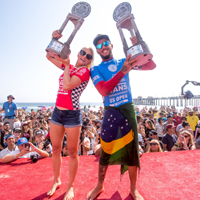
Wrangler booth at Bread and Butter fashion trade show.
An interesting new subculture that’s been percolating since the rebound in Europe of Wrangler, Lee, and before that, Levi Strauss, is the European version of “Americana” style. While it’s not uncommon to see fashion players in Japan copping American traits, i.e., denim jeans, cut-off jean skirts, Redwing boots, Carhartt, plaid shirts, and cowboy-indie mash-ups, it’s quite interesting to see young people across Europe cop the look -and we must admit, doing it much better than most Americans.
Wild west motifs in upper urbanwear in Europe, and designer-ready-to-wear in America continue to mark out a new path that’s both retro in a western-sense, and extremely new when tailored.
When it comes to Europeans copping the western-American style, they do it with a twist of their own, including accessories that provide a nu rave aspect such as colorful Alice bands, old school Raybans, vintage finds such as Duran Duran band merch from the ’80’s, or a twist on the ole’ red, white, and blue.
There is some merit to the much-criticized euphemism “The United States of Europe” in that the crossover marks another step of culture clashes from the easy transmission of music, style blogs, and social networks that have provided far greater ability to see what’s on the other side of the pond, and vice versa.
Either way, the Euro Americana look is an exciting fashion subculture as different pieces of quintessential national traits come together to create a style that’s altogether new (albeit with hints of deja vu).
Watching changes in the denim marketplace in the last 3 years has been one of the most volatile and trendsetting since the Great Repression was officially announced in 2008-9. While the premium denim category has taken the greatest hit, as most people are no longer willing to pay $250 a pair no matter if they come from Japanese looms and are Italian washed, where things have changed the most are in styles -most of which has taken on a very DIY old-school approach.
Strategically ripped denim pants in the thighs, cut-off and rolled up, with white pockets in clear view is an obvious throwback to the late ’80s, early ’90s grunge, but this time, as most recycled trends are, there’s something cataclysmic about what’s happening with denim DIY silhouettes, especially among young women. First, there’s a mix of Americana in that many people are wearing self-made short shorts paired with cowboy boots or early ’90’s slouchy boots (as was in clear view at Coachella). Other styles indicate rave and synth-punk neon colored tops, even in plaid, paired with ripped denim and short shorts or denim skirts.
Such collaborations are indicative of latest trends in music also with synth-punk, nu rave, and even blues, bordering on country rock, becoming favorites to an entirely new generation (think Jack White influences).
Interestingly, at Bread & Butter in Berlin, the Wrangler booth, which is a quintessential USA brand, looks more America Wild West than what’s usually done in America. Other brands such as Lee and of course Levi Strauss -and their faded wash, boyfriend jeans style–are increasingly popular among youth culture in Europe and North America. Even young people in Japan are moving away from some of the darker, crisp “premium” styles of so-called urbanwear which was hot circa 2008.
While this should not be confused with the skinny-leg, neon-colored denim and camo denim coming from brands such as Dickies, Hot Topic, Tripp NYC, and others, the old classic denim cut-offs and ripped pantlegs are a sign of the times that denim has taken on its own, and coming from an entirely DIY spirit.
The final indication that Europe has successfully copped Americana when it comes to denim is the recent Swedish Golden Egg award for best advertising which went to Wrangler’s Blue Bell campaign (which has won more than a dozen international awards in 2010 alone) featuring top model Tony Ward.
The technology in the ad, using video and drag and drop is very cool, but the imagery is also very American: It looks like Tony’s “story” takes place in a Denny’s diner, mixed with scenes from Palm Springs desert-like landscapes, a Motel 6 (with a strategically placed American flag on the couch), and back to an old-school Western bar. In real life, such places are not all that glamourous, but done the Wrangler-way in this case (and with Tony Ward), it’s quite exotic and sexy.
The Golden Egg Awards take place in Sweden each year featuring best advertising and communication campaigns. Wrangler Blue Bell was a web project done in collaboration with the agency Kokokaka, based in Goteborg.
Clearly, Euro-Americana is here to stay. Check it out:
http://www.wrangler-europe.com/blue-bell/


